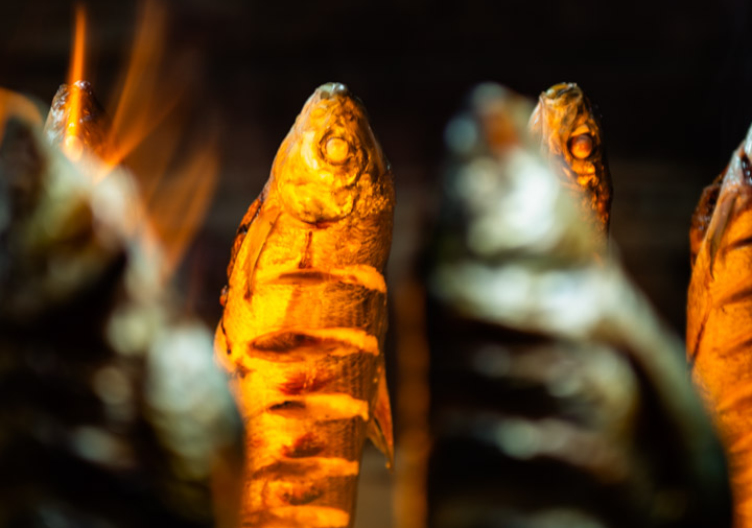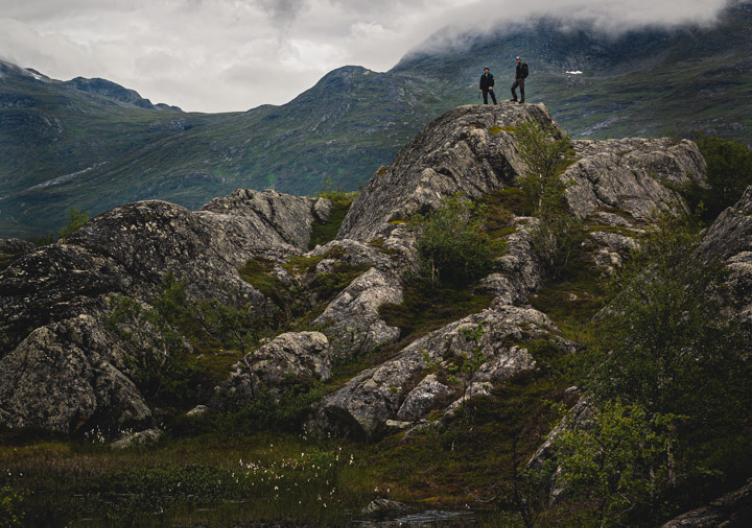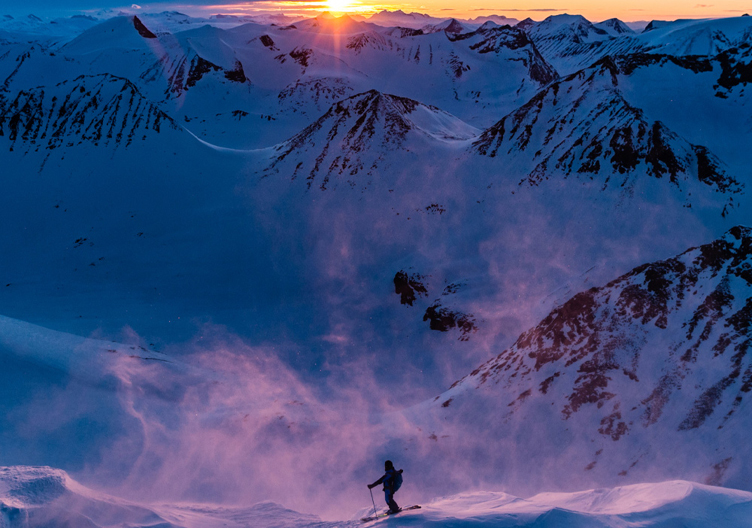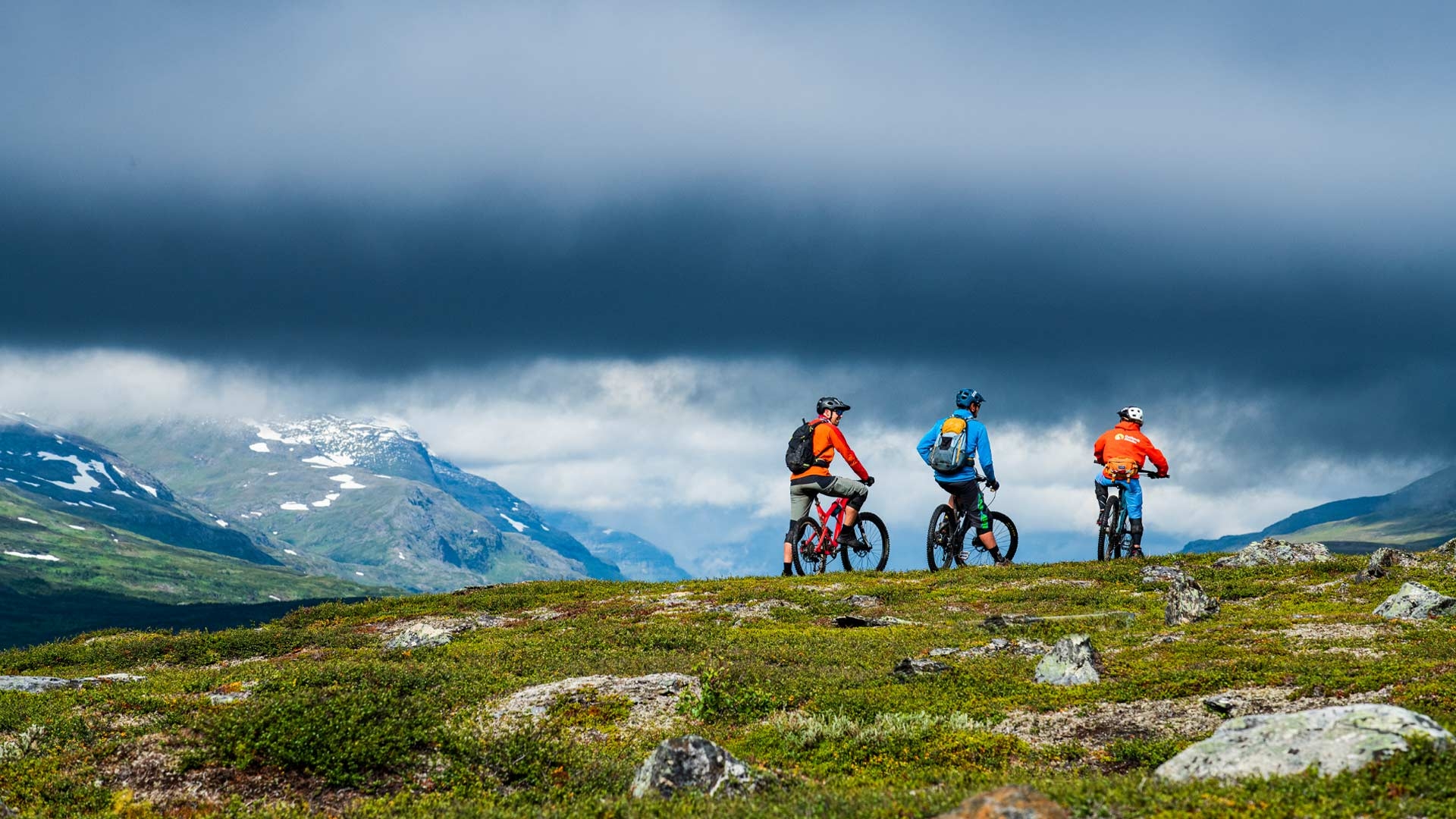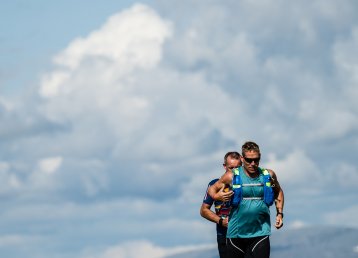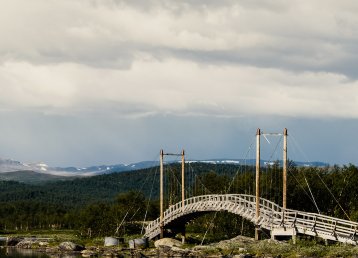Mountain biker and World Cup medallist Steffi Marth is sat in the Lobby Bar at Niehku Mountain Villa in Riksgränsen, smiling. She has been biking in the Arctic environment of the Kiruna mountains for two days now, and she is a bit stunned. She takes a sip of the bubbly ordered.
— I didn’t decide until four days before departure that I was going to come along. I really didn’t think about it in terms of biking, more as the adventure of going north.
— It’s a photoshoot with my sponsors, but at the moment, I’m not even thinking about it as a job. I’m just thinking about when I can come back.
— The biking yesterday, up to Låktatjåkko and down again, was nothing but epic. Such long trails and basically no other people.
Steffi Marth lives in the Alps; she is a professional biker and has been all over the world. She never thought there would be such good biking here in the very north.
— We’ve been biking for two days, and all I can think about is getting out there and biking again tomorrow. Mattias, the photographer, says the trip we’re taking straight from the hotel is one of his favourite rides. I can only imagine it’s magic if that’s the case.
The Arctic light
The photographer she is talking about is Mattias Fredriksson. He has been the world’s most published ski and adventure photographer for many years. These days he lives in British Columbia. But his career started here, in Riksgränsen, when he was a seasonal worker and started taking photos, dreaming he would be able to make a living from it one day. Mattias is from the Swedish region Småland, in the south, so Riksgränsen and the Kiruna mountains might not be part of his DNA but definitely part of his soul. He often returns here for commissioned photography. He is lost in the mountains here.
— It’s something about the light, for sure, the Arctic light. From the end of the winter season to the northern lights season, you can work such incredibly long, rewarding days.
— But it’s because of the conditions too, what we sometimes call features. It’s just great. I’ve biked a lot here, and even so, there’s still so much to discover. And even if I’ve done stuff before, I want to do it again.
— I don’t think people here understand just how good the biking is. That feeling of something being natural and real, anything but arranged.
— Yes, it’s like Steffi Marth says: it’s a surprise.
Bike life
Åsa Säfström discovered the biking around Abisko immediately after moving here, during her first summer season. She is a mountain guide and started out working on the pistes. After a few years, she moved to the mountain Nuoljafjället in Abisko. Then she worked at the STF ski school for five years. Today she runs her own guide company: Outback Abisko.
— In winter, I run snowmobile safaris, and in summer, I work with mountain biking and long hikes.
— Some might say there’s a big difference between snowmobile guests and hiking visitors – and there probably couldn’t be more of a difference. But at the same time, both are excellent ways of getting out onto the mountain.
— Winter guests in Abisko are almost exclusively made up of northern lights tourists, and in the daytime, they want shorter adventures, just visiting the mountains. Snowmobiles are an excellent way of doing that.
— In summer, there are still plenty of hikers in the area, and I offer tailor-made, a bit more comfortable, long hikes between the cabins.
They provide a kind of cement between them, made up of trail tires and splattered mud.
Biking started out as a personal interest. Åsa and her partner Ante started biking together, developing their relationship as well as their biking. When they go travelling nowadays, the bikes always accompany them. They provide a kind of cement between them, made up of trail tires and splattered mud.
— It’s nice to have that interest in common. When we get the chance, we take a couple of hours and go for a bike ride. Sometimes that’s all it takes to feel that the world is as it should be.
Trails
Ante works as a property manager at STF, and his shift encompasses the entire northern King’s Trail. He has seen a metre or two of trails in his life, but he still likes to go biking whenever he gets a chance. The eternal light in summer means that even if you work all day ‘at the office’, you are able to bike in daylight.
One of the classic trails here is, of course, the famous Navvy Road between Abisko and Rombakksfjorden in Norway. This road, used for supplies and personnel, was created when construction began on the Ore Railway Line at the beginning of the 20th century. Stora Ölturen (‘the Big Beer Tour’) in Riksgränsen and the trip up and down between Björkliden and Låktatjåkko are also favourites.
The biking culture means being kind.
— It’s important to remember that bikers don’t create new paths but bike on paths that hikers or horses have already made.
— The Navvy Road has been here for 120 years, and when we go biking in the area around Björkliden, we often use quads tracks or roads used to transport supplies to the golf course and the skiing area. We don’t make paths the same way hikers do, says Åsa.
Perhaps that is important to include in an article about sensitive mountain nature. Research in North America and Europe, where the pressure from both bikers and hikers is much greater, has shown that the imprint created by mountain bikes is smaller or similar to that of a hiker. Hoofs and motor vehicles, on the other hand, make more of a mark.
— The biking culture means being kind. It’s always up to the biker to give way to the hiker. I think the division of roles is perfect.
The Navvy Road
The Navvy Road is a kind of cultural trail that is sometimes forgotten. It was built as a route to transport railroad workers and supplies when the railway between Narvik and Kiruna was built. Usually, the railway itself was the supply route, and as the track was laid, the supplies got where they should. But here they wanted to speed up the process and drew up a supply transport road from the ice-free fjord Rombakksfjorden, past Riksgränsen, Vassijaure, Låktatjåkka, Björkliden and other stations, to Abisko. This way, the railway construction could take place in several stages. In 1901, when the work was at its most intense, five to six thousand labourers worked along the railway and several small communities formed along the Navvy Road. The Navvy Graveyard by Tornehamn is just one of many things bearing witness to the fact that their life was not always easy.
The 120-year-old road is still in good condition, even if it would – to be honest – benefit from a little bit more love. As a bike trail, it is both magical and frustrating. After a harsh winter, plenty of dead trees have fallen across the path, and it takes a while to get past these obstacles. Even though it is an old road, it feels like a modern adventure. The difficulties provide it with challenges that make everyday worries disappear. Nicole Formoso, the editor of the American Bike Magazine, tells the story about a journey along the Navvy Road in her article: how she loves the green landscape, the birch forest, the mountain slopes and the waterfalls that surround the trail before concluding: “It’s like a much-less-Instagrammed Iceland”. A description that can be agreed with.
Go biking!
The area along Rallarvägen, between Abisko and Rombaksbotten, probably has some of the best mountain biking in the World. And this landscape is a beauty as well. Åsa Säfström, at Outback Abisko, really has a great playground to bring her clients to. Get in touch with her.



